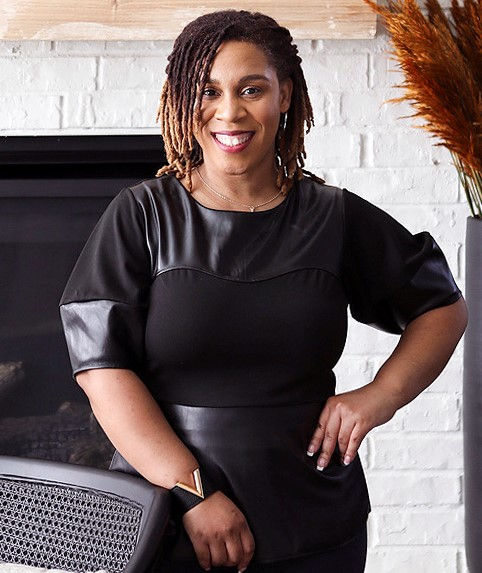How Design Strengthens Communities
- Veronica Sanders

- Jul 13, 2016
- 4 min read
Updated: Jul 9, 2023
Habitat for Humanity Volunteering

Given the recent tragedies of Alton Sterling, Philando Castille and the Dallas Police Department/DART Officers, we need to strengthen our communities more than ever. The more improved our communities are, the more improved our households will be and our compassion towards each other. The old adage says, "It starts at home", and this is true! If we begin the process of improving our homes, it can raise the morale of the individuals inhabiting the space and trickle over to action in improving the community. Here are a few ways that design can strengthen and improve our habitats.
COMMUNITY HOME BUILDING

Low-income communities and even higher income communities can benefit from building homes as a group. When I volunteered with Habitat for Humanity, an organization that thrives on volunteers to help build affordable homes, I learned so much about people from all walks of life. Each person brought their talents together to help a family in need. During the process of home building, you begin to LIFE build! You build connections, lasting memories, and compassion for one another all in the name of helping someone achieve their dream of home ownership. Not only are you improving the look of the community by building new or re-building distressed homes, but you are improving the lives of a family. You're playing a part in establishing lifelong memories and connections with neighbors. Not to mention that if programs for home building, and even updating abandoned hotels and motels to use them as transition homes, you can decrease homelessness tremendously, thus improving the quality of the community and safety for everyone.
UPDATE INTERIORS
If home building lays the foundation to building strong communities, improving the interiors helps to ensure it stays strengthened. Your home is not only a reflection of you, but it also has a direct effect on your quality of life. That's why organizations, such as Dwell with Dignity, work to improve the homes of families in need. Their mission is, "to help families escape poverty and homelessness through design; one household at a time". My experience with volunteering through this organization over the years has shown me how the quality of live is drastically changed through updated interiors. The same is said for the interiors of offices and other buildings.
Color Psychology studies show that something as simple as changing the wall color of your interior can change your mood and increase connections with others. Earth tone colors, reds, oranges and yellows stimulate conversations, which what we need more of today. "These are colors that encourage people to sit around and talk," says Kate Smith, a color consultant in Lorton, Va. "You feel the warmth, the connection with other people." Research teams from Norway and American also believe that adding plants in the home and workplace improves productivity. Colorful flowers in hospitals and views of greenery also shown to improve the healing process for patients. Plants also improve the quality of air and overall health. Imagine how a paint change, adding plants, and a few changes of furniture pieces and improve the moods, health, and quality of life as well as businesses in the community and in your home. It may be time to take up DIY activities!

IMPROVE PUBLIC SPACES
The vibe that you get when entering and living in a community has a huge affect on how one lives in it. If buildings are worn out, open parks are scarce, and there is no place to get out and enjoy the fresh air, you feel isolated and distraught. Improving the walk-ability and appearance of public spaces has a huge and lasting impact on the people in the community. Adding more parks and walkways builds neighborly connections. Designing more green spaces to improve air quality and usability. Reducing waste as well as add more community gardens and local groceries reduces food droughts and isolation while improving the quality of life of its inhabitants. Making the communities more sustainable is what is needed because it can help reduce crime. It can also improve the health of individuals by reducing diseases, reduce overcrowding and even green house gas emissions. Aside from health and physical improvement, building sustainable communities and public spaces also increases the economic and social success of a community by creating more bonds and more places to shop. Tom Borrup of "Project for Public Spaces" believes that, "even in the best-designed spaces for public interaction, activities need to be planned, and the space needs to be clean, secure, and well maintained, or it is unlikely to serve people well." Public spaces need to be planned and designed to serve the community so that it can thrive. Through community efforts and collective actions from programs such as the American Society of Interior Designers 1% program, U.S. Green Building Council and the American Society of Landscape Architects in collaboration with the communities, this is a dream that can quickly become a reality.
Mark 3:25 states, "If a house is divided against itself, then that house cannot stand." So can be said for this country and the communities within it. If we stay divided, we cannot stand strong. If it is divided, we cannot help each other grow, survive and thrive. If we want to strengthen our communities, improve communication, get back to connecting with each other, and improving our quality of life, it starts at home. It starts with us. If each one reaches one, if each one teaches one, and if each one does their part we can be the great America that we all strive to be. If it is to be, it begins with me.





Comments